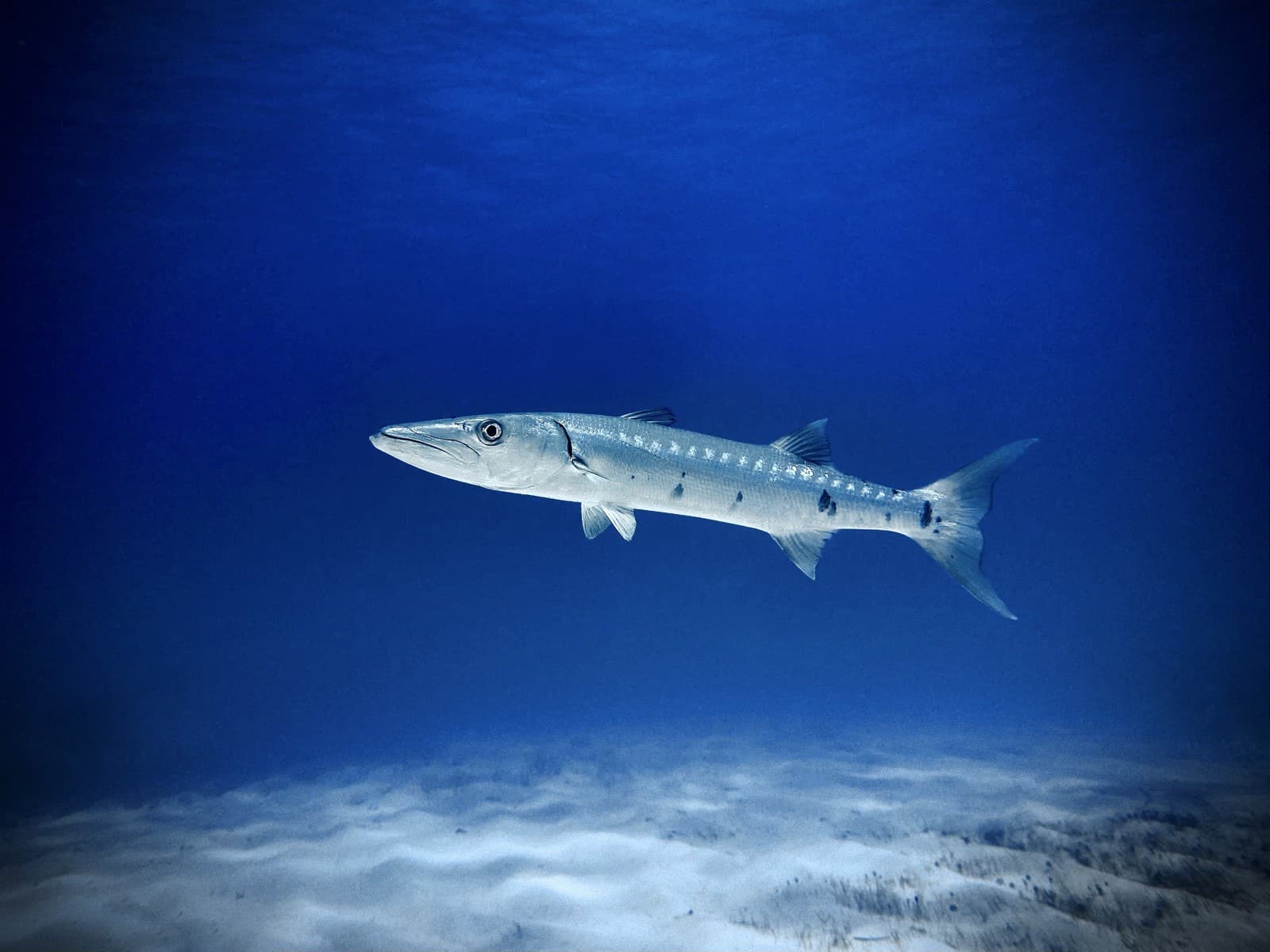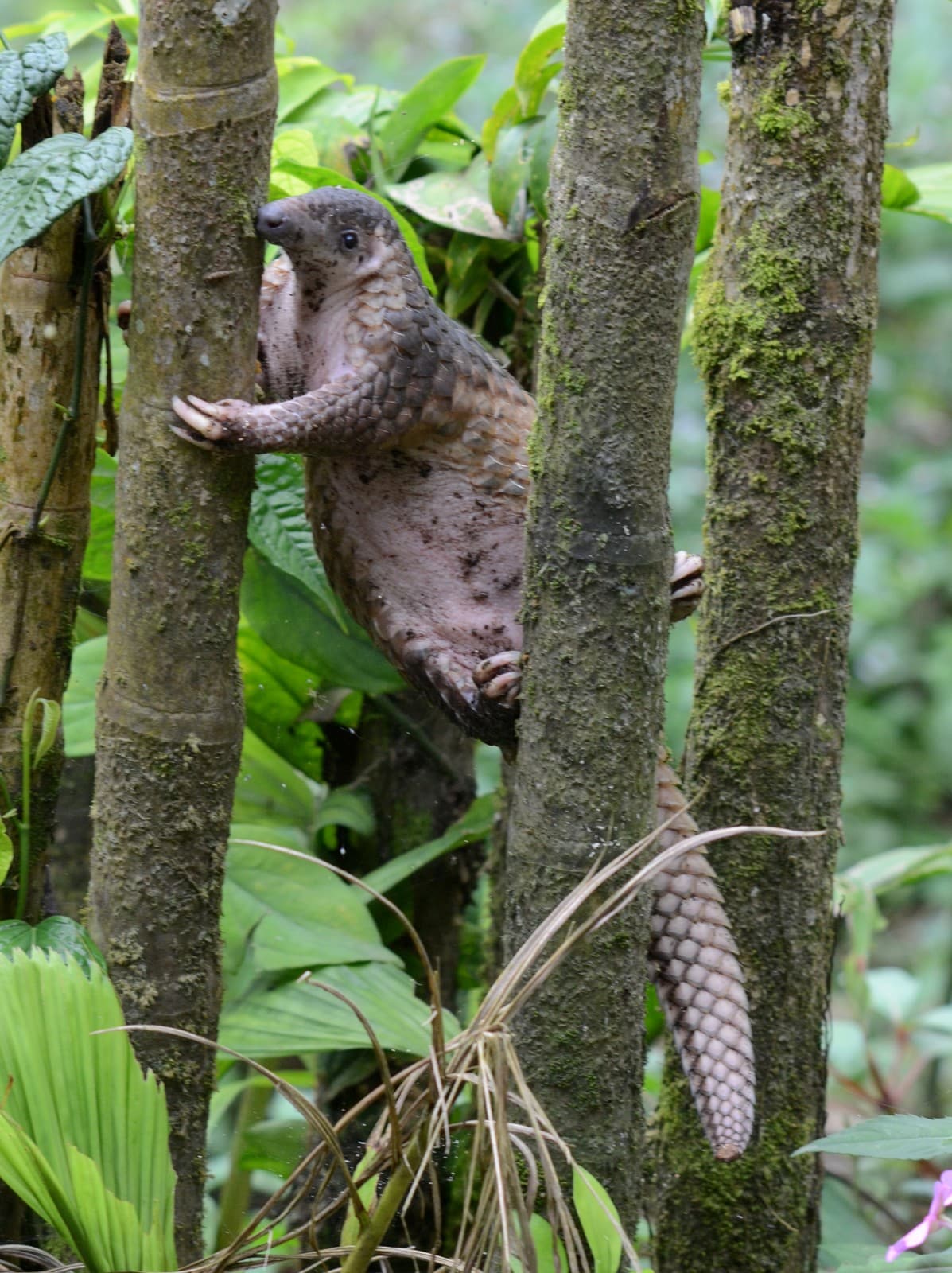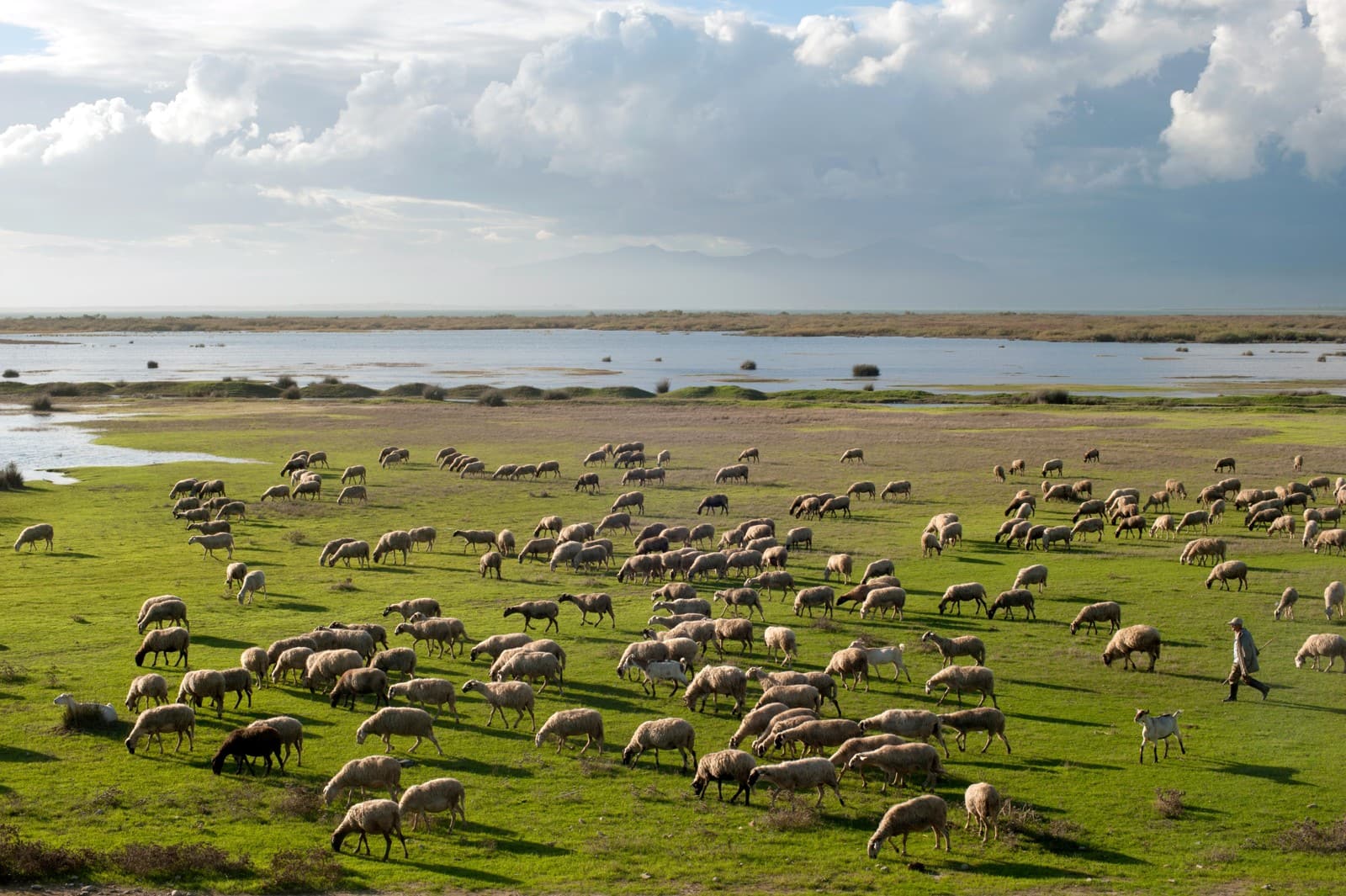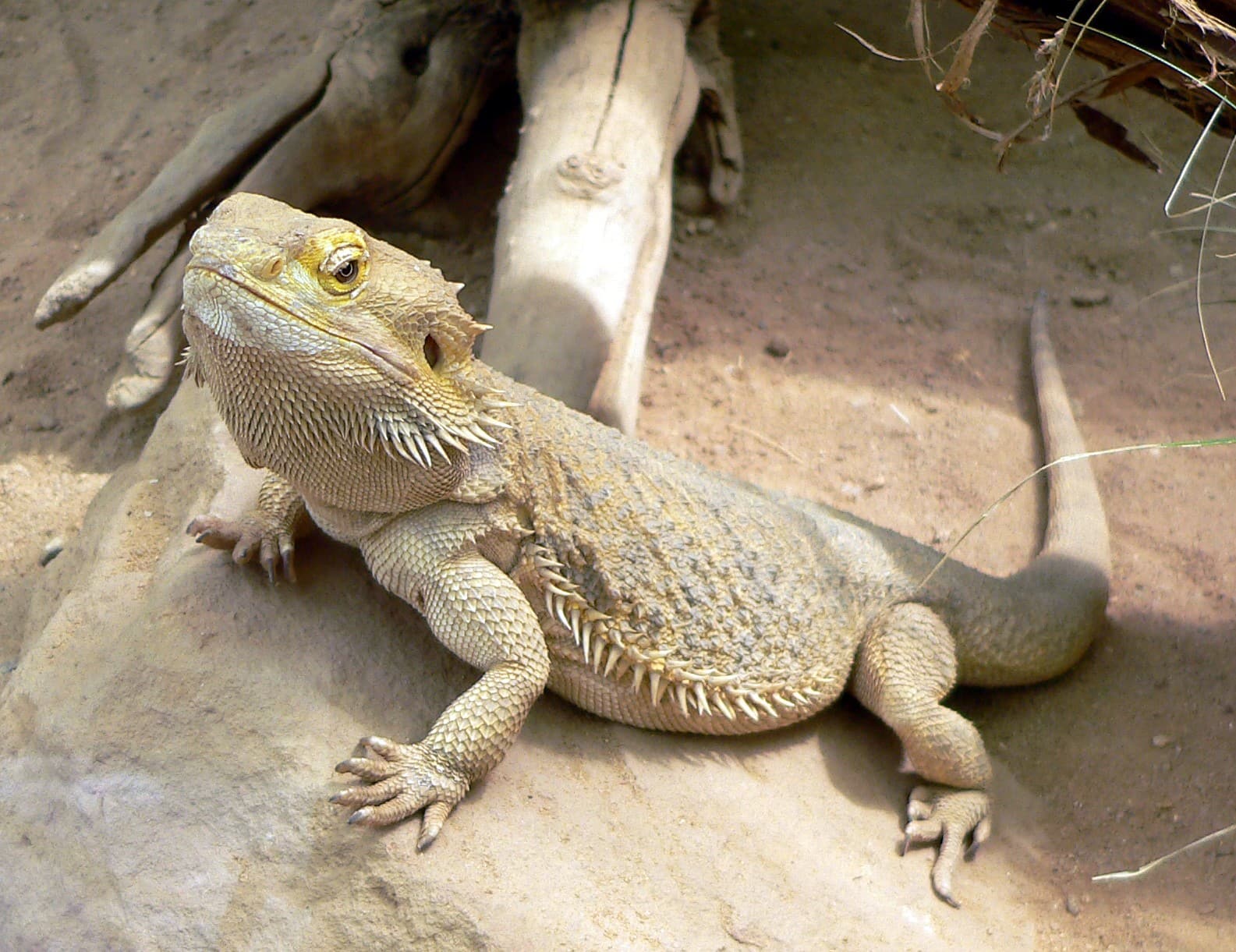Seahorse vs Pipefish: A Complete Comparison
While seahorses and pipefish belong to the same family (Syngnathidae), these fascinating marine creatures exhibit striking differences in their anatomy and behavior. Seahorses are distinguished by their vertical swimming position and distinctive S-shaped body, reaching lengths of 0.6-14 inches (1.5-35.5 cm), while pipefish maintain a horizontal orientation and can grow up to 26 inches (66 cm) long.
These remarkable fish share some common features, such as their tubular snouts and method of feeding through powerful suction. However, their evolutionary paths have led to distinct adaptations that set them apart in the marine environment. Let’s explore the key differences between seahorses and pipefish that make each species unique.
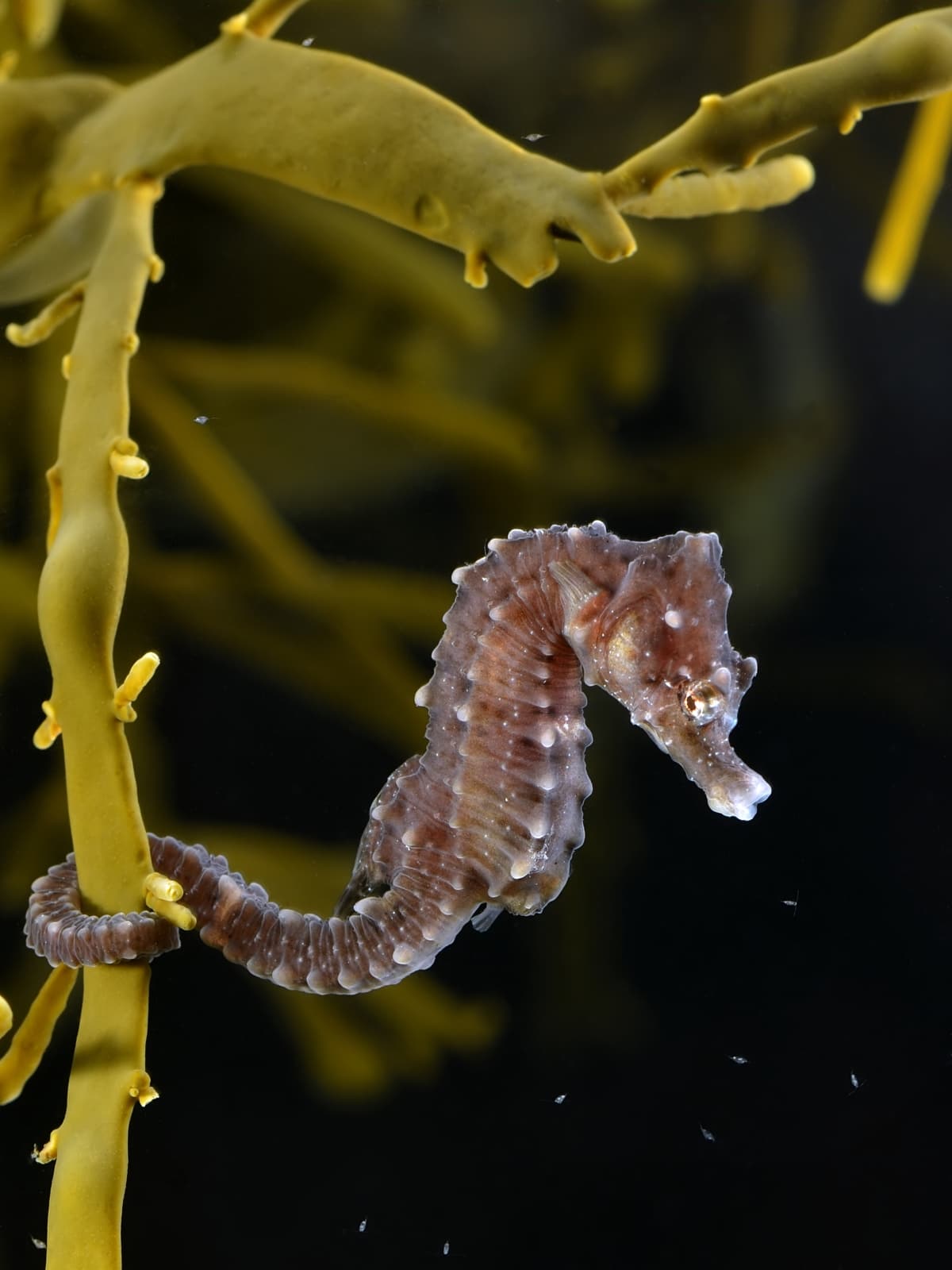
© Hans Hillewaert / CC BY-SA 4.0
The seahorse’s distinctive upright posture and prehensile tail allow it to anchor itself to marine vegetation while hunting, a unique adaptation not found in other fish species.
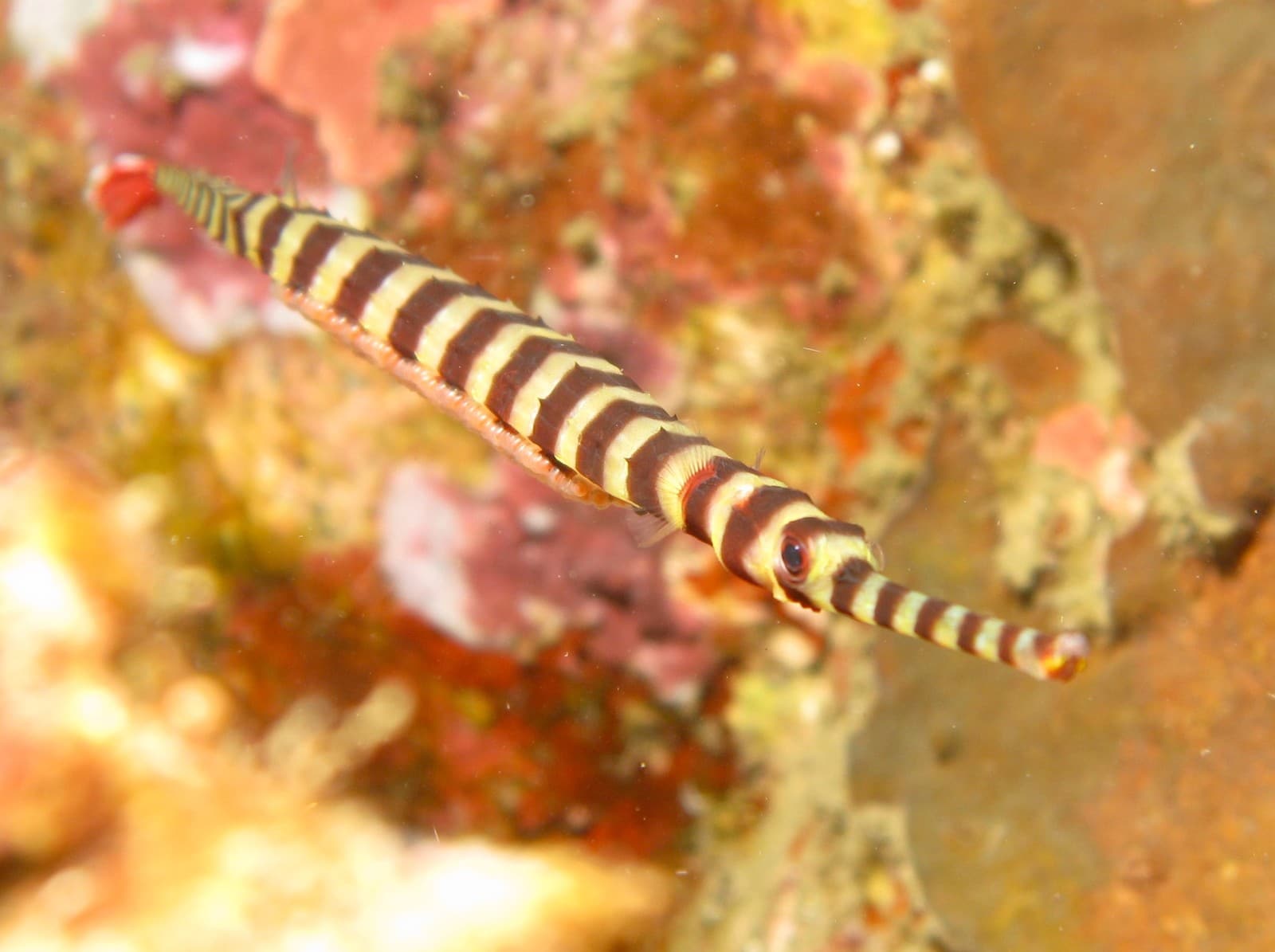
© prilfish / CC BY 2.0
Pipefish exhibit a streamlined, horizontal body position typical of most fish species, allowing them to navigate efficiently through seagrass beds and coral reefs.
Key Differences Between Seahorses and Pipefish
| Feature | Seahorse | Pipefish |
|---|---|---|
| Body Position | Vertical swimming stance | Horizontal swimming position |
| Size | 0.6-14 inches (1.5-35.5 cm) | Up to 26 inches (66 cm) |
| Tail Type | Prehensile, can grip objects | Straight, non-prehensile |
| Swimming Ability | Slower, less agile | Faster, more maneuverable |
| Head Shape | Horse-like with bent neck | Straight, in line with body |
| Habitat Preference | Coral reefs, seagrass beds | Open water, seagrass meadows |
Swimming and Movement Patterns
Seahorses are unique among fish for their vertical swimming position, using their dorsal fin to propel themselves through water at speeds up to 5 feet (1.5 meters) per hour. Their characteristic hovering is achieved through rapid fin movement of up to 35 beats per second.
Pipefish, conversely, maintain a horizontal position typical of most fish species. Their streamlined body shape allows them to swim more efficiently, reaching speeds significantly faster than seahorses. They navigate through water with smooth, snake-like movements, particularly effective in their seagrass habitat.
Habitat and Behavior
Both species demonstrate remarkable camouflage abilities but utilize them differently. Seahorses tend to remain stationary, changing color to blend with their surroundings while anchored to coral or seaweed. Pipefish actively swim through their environment, relying on their elongated shape and striped patterns to mimic swaying seagrass.
Reproduction and Parental Care
One fascinating similarity between seahorses and pipefish is their unique approach to reproduction. In both species, males carry and incubate the eggs, though their brood pouches differ significantly:
- Seahorses: Fully enclosed pouch with complex placenta-like structure
- Pipefish: Semi-enclosed groove or simple pouch along the underside
Feeding Habits and Prey Selection
Both species are ambush predators, using their tubular snouts to create powerful suction for catching prey. However, their hunting strategies differ:
- Seahorses: Wait-and-strike predators, remaining stationary while ambushing prey
- Pipefish: Active hunters that patrol their territory searching for small crustaceans
Conservation Status and Threats
Both seahorses and pipefish face similar environmental challenges, primarily habitat destruction and collection for traditional medicine. However, seahorses are generally more vulnerable due to their slower swimming speed and specific habitat requirements. The international trade in seahorses involves approximately 20 million individuals annually, while pipefish face less direct collection pressure.
Which Would Win in a Direct Comparison?
While neither species is aggressive toward the other, pipefish hold several advantages in terms of survival capabilities:
- Superior swimming speed and maneuverability
- Better ability to escape predators
- More versatile habitat adaptation
- Greater size potential
However, seahorses show better camouflage abilities and can grip onto substrate during strong currents, demonstrating that each species has evolved perfectly for its specific niche in marine ecosystems.

